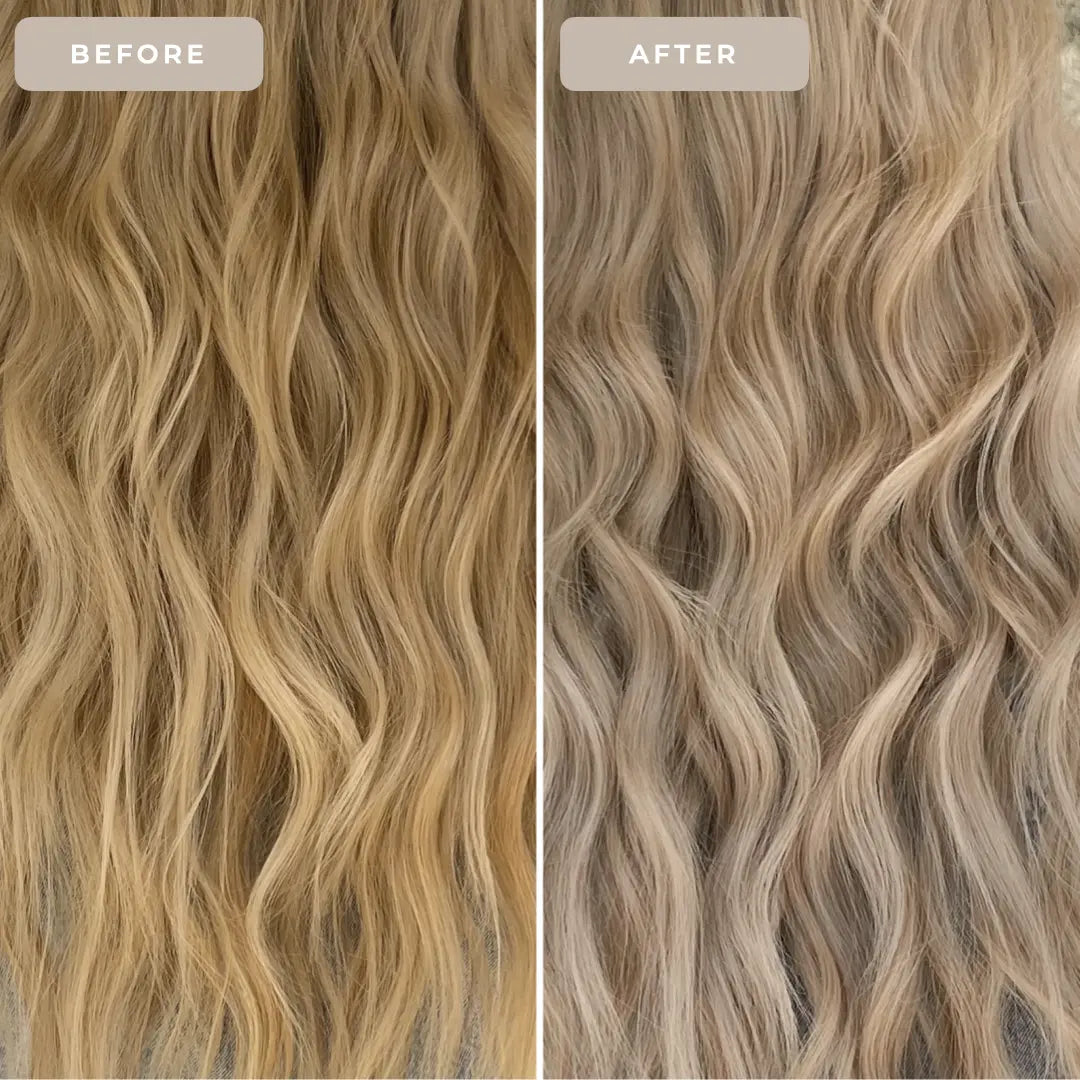Ever gaze into the mirror and wonder if your blonde or highlighted hair is starting to resemble a brassy, yellowed version of its former glory? Perhaps you’ve noticed an unwanted warmth creeping into your silver or gray strands. The culprit? Oxidation, environmental factors, and even mineral deposits from your shower water. The solution might just be lurking in a bottle of vibrant violet: purple shampoo.
But what exactly does this chromatic cleanser do, and how does it work its color-correcting magic? Let’s delve into the science and application of purple shampoo, unraveling its nuances and clarifying its utility in the vast landscape of hair care.
The Color Wheel Conundrum: Neutralizing Yellow Tones
At the heart of purple shampoo’s efficacy lies the principles of color theory. Remember learning about complementary colors in elementary school art class? Purple and yellow sit directly opposite each other on the color wheel. This positioning is not merely aesthetic; it dictates their interaction. When these hues are combined, they neutralize each other, effectively canceling out the unwanted yellow tones in your hair. Think of it as a corrective filter, like adjusting the white balance on your camera to eliminate a yellowish cast.
Purple shampoo deposits a minuscule amount of purple pigment onto the hair shaft. This pigment counteracts the brassiness, restoring a cooler, brighter tone to blonde, silver, gray, or highlighted hair. It’s crucial to emphasize the word “minuscule.” The goal isn’t to dye your hair purple (although overusing the product can, indeed, lead to a temporary lavender tinge); instead, it’s to subtly influence the overall color by attenuating the undesirable yellow undertones.
Decoding the Ingredients: Beyond the Purple Pigment
While the purple pigment is the star of the show, the other ingredients in purple shampoo are equally important for maintaining healthy hair. Most formulations contain surfactants (cleansing agents), emollients (for softening and conditioning), and humectants (to retain moisture). These components work together to cleanse the hair, replenish lost hydration, and prevent dryness, which can be a common side effect of using a pigmented shampoo.
Look for sulfate-free purple shampoos to minimize stripping the hair of its natural oils. Sulfates, while effective cleansers, can be harsh and potentially damaging, especially for already processed hair. Opting for a milder formula will help preserve the integrity of your strands and prevent excessive dryness or brittleness.
Application Protocol: A Guide to Optimal Usage
Using purple shampoo effectively requires a measured approach. It’s not a typical shampoo meant for daily use; overdoing it can lead to unwanted purple hues or dryness. Start by using it once or twice a week, gradually increasing frequency if needed. Monitor your hair’s tone closely, adjusting the frequency based on the desired level of brass neutralization.
Here’s a step-by-step guide for optimal application:
- Wet your hair thoroughly: Ensure your hair is completely saturated with water before applying the shampoo.
- Apply a generous amount: Focus on the areas where brassiness is most prominent, such as the ends and around the face.
- Lather and massage: Gently massage the shampoo into your hair, working it from roots to ends.
- Leave it on for a few minutes: The amount of time you leave the shampoo on depends on the intensity of the brassiness and the strength of the formula. Start with 2-3 minutes and gradually increase the time if needed, up to a maximum of 5-10 minutes.
- Rinse thoroughly: Rinse your hair completely, ensuring all traces of the shampoo are removed.
- Follow with conditioner: Purple shampoo can be slightly drying, so it’s essential to follow up with a hydrating conditioner to replenish moisture.
Beyond Blonde: Who Can Benefit from Purple Shampoo?
While often associated with blonde hair, purple shampoo’s benefits extend to a broader spectrum of hair colors. Anyone with silver, gray, highlighted, or even light brown hair with blonde undertones can utilize it to combat brassiness and maintain a cool, vibrant tone. It’s particularly useful for those with naturally gray hair, as it can help neutralize yellowing caused by environmental factors and product buildup.
However, purple shampoo is generally not recommended for dark brown or black hair. The purple pigment is unlikely to have a noticeable effect on these deeper shades, and it could potentially leave a dull or ashy residue.
Potential Pitfalls: Avoiding the Purple Peril
Despite its efficacy, purple shampoo isn’t without its potential drawbacks. Overuse, as previously mentioned, can lead to a faint purple tint, especially on porous or damaged hair. This is usually temporary and can be corrected with a clarifying shampoo, but it’s best to avoid it altogether by using the product sparingly.
Dryness is another common concern. Purple shampoos often contain cleansing agents that can strip the hair of its natural oils, leading to dryness and brittleness. To mitigate this, always follow up with a hydrating conditioner or hair mask. Using a deep conditioning treatment once a week can also help replenish lost moisture and maintain the health of your hair.
Finally, be mindful of the ingredients in your purple shampoo. Some formulations contain harsh chemicals that can irritate the scalp or damage the hair. Opt for sulfate-free, paraben-free, and cruelty-free options whenever possible.
In conclusion, purple shampoo is a potent tool for maintaining vibrant, brass-free blonde, silver, or gray hair. By understanding the science behind its color-correcting abilities and following a proper application protocol, you can unlock its potential and keep your locks looking their best. Just remember to use it judiciously, prioritize hydration, and choose a formula that suits your specific hair type and needs. Embrace the violet, banish the brass, and revel in your revitalized hue.









Leave a Comment